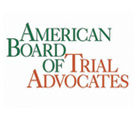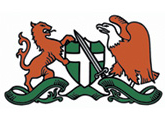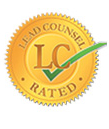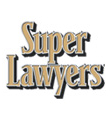The aftermath of a car accident is devastating enough without having to worry about the identity of the driver who fled the scene. Lots of money goes into receiving treatment, and you may miss work for many days while you heal. The last thing you want to do is pursue remedies and reimbursement on your own at a time when you are dealing with financial stress. At the Los Angeles Car Accident Attorney, we aggressively help victims of hit and run accidents seek compensation.
Legal Definition of Hit and Run Accident
As per California statutes, a hit and run collision comes about when a motorist escapes the stage of a crash without identifying him or herself to the other party involved in the collision and causes property damage and injuries. When a driver causes an accident, he or she should stay around until the police reach. Leaving the stage at any other time is a crime unless a person is going to seek medical attention or helping another person get medical care. Even at the time, one has to leave their contact info, name, and insurer’s name with the person who remains at the scene.
In Los Angeles County alone, an average of 20,000 hit and run accidents occur annually based on LAPD records. The records demonstrate that a vast number of LA residents suffer physical damages caused by the hit and run collisions. What is even worse is that these victims have to pay for medical treatment and suffer both emotionally and physically because of someone’s negligence.
It’s worth noting that whether a person is at fault or not, leaving the scene makes one criminally and civilly liable for a hit and run. If such a driver hits you, you are likely to be confused about how you will go about claiming damages because the liable party fled the scene before you can gather any information. In such a case, state fault laws won’t apply, but fortunately, you can turn to your insurer for compensation.
Taking quick action to identify the driver who left the scene can help you hold him or her accountable for your injuries and losses.
Actions a Victim of a Hit and Run Crash Should Take
Anyone can be a victim of a hit and run collision although in different circumstances. The car might be parked when it happens, or you might be driving when the incident occurs. In any of these circumstances, it’s paramount to understand the steps you should take towards getting maximum compensation. Discussed below are things to do after a hit and run accident:
-
Try to Identify the Fleeing Driver
Accidents occur in a blink of an eye, so you might not recall the events that led to the crash if you were driving. But despite this, if you are hit by another driver who fails to stop, try to check the car plates, color, the model of the car, and any other information that might be relevant in identifying the driver.
Calling the police right away might not be a great idea because, in most cases, they are unable to locate drivers who flee the scene. But when you write down a few things that make it easy to identify the car or driver, the police will find the job easy. They will rely on the information you wrote down to check traffic footages for a vehicle or driver that matches the description you gave.
In a different scenario, you might park your car along the street to go shopping and upon returning, you realize the vehicle has been dented, and there is no note on it or witnesses. The approach you take is different from the one where you are inside the car. You must find clues that can help you identify the driver responsible. Go back to the store where you are parked outside and find out if they have security cameras that might have captured the incident.
Requesting to see the security footage immediately is essential because most of them are saved for a few days and then deleted. If you only parked the car for half an hour, it would be easy to identify the hit and run driver.
In either of these scenarios when the accident occurs, make sure you:
-
Jot down all the details you can see or remember about the hit and run vehicle or driver
-
Call 911 and remain at the scene
-
Request all those at the scene motorist and bystanders to record their statements with the police
-
If there were no witnesses, request for the CCTV footage that captured the event
-
Take photos of the damage done to the vehicle or injuries you have sustained
Take note that when an accident occurs, you are usually panicked and concerned about your safety and that of other car occupants. You might not have all the time to identify the bumper stickers, license plate number, the appearance of the driver, or the color and model of the car that fled the scene. Even in such a situation, you don’t have to lose hope. Police can easily find small pieces of evidence like pain scrapes that might help with car identification.
-
Seek Medical Attention
Identifying the driver might seem like a priority in a hit and run accident. Despite this, you should be concerned about your well-being too and that of other car occupants. If you were driving when a car rear-ended you and fled, note a few details that can help identify the fleeing driver and then check on other car occupants to see if they are safe. Where possible, pull over the car in a secure location and call the police. In case there is someone with serious injuries, take them to the hospital first even before the police arrive.
You should also seek medical attention, too, even when you feel okay. Remember, medical records are a very critical aspect of your claim because if the police are unable to trace the runaway driver, you will have to turn to your insurer for compensation. Insurance companies will require medical documents that prove you took the injuries seriously. The records will also show your injuries stemmed from a hit and run crash and not anything else.
-
Speak to a Personal Injury Attorney
Another essential aspect of recovering compensation is to know what is involved in the procedure. The most suitable person to enlighten you about your claim is an attorney with knowledge of personal injury law and hit and run collision injuries. At the Los Angeles Car Accident Attorney, we understand hit and run crashes, and various strategies to help you get compensated even if the identity of the liable driver is unknown.
Making an Insurance Claim after a Hit and Run Accident
Two things can happen when making an insurance claim for personal injuries. One, you might fail to track the liable party, which means you will not file a personal injury claim. Instead, you will turn to your insurer for compensation through uninsured motorist coverage. The second way is to register an injury claim against the negligent driver if you were able to trace him or her after the accident successfully.
Take note that the statutory limitation for car accidents, hit and run accidents included is two years. You should file a claim before the duration elapses.
Uninsured Motorist Coverage
Uninsured motorist coverage is a policy that provides coverage for drivers who are involved in accidents caused by uninsured motorists.
In California, 85 percent of car insurance policies have uninsured motorist coverage. However, most people are not aware of this coverage until they are involved in a hit and run accident. It happens because insurance agents are reluctant to educate their clients on the need to make an uninsured coverage claim. Some even go to the extent of implying that filing a claim like that might increase insurance premiums, which is untrue.
Because you have no one to blame in the majority of hit and run accidents, the uninsured motorist coverage will compensate for car damages and the cost of treatment but only up to the limit of the policy. It doesn’t matter whether the car was borrowed when the accident occurred, or you were just a passenger. The car insurance policy of the car owner will be used to compensate for vehicle damages and medical treatment. This should be good news for you because part of your medical expenses and vehicle repairs will be recovered, although not in full. Uninsured coverage eases the burden for medical treatment and car repairs.
Although uninsured motorist coverage is readily available for many people, your insurer will not just cover the claim without a fight. Insurers are in business for profits and will do anything in their power to deny your claim. Therefore, as you turn to your insurer for compensation, you will need all the evidence to prove you are the victim in the accident. Medical records and images showing the damages done on your vehicle will also be required to help establish the cost of treatment or repairs.
In case you are unlucky not to have uninsured motorist coverage, or have one, but not enough to cover your medical expenses, a profound injury attorney will find ways to cover the costs. The medical policy on your car insurance can be coordinated with other medical insurance coverage programs like Medi-Cal or Medicare to compensate or pay for the treatment of hit and run injuries.
An attorney will analyze your current policy if you are concerned that your insurance policy will not cover the cost of replacing or repairing your vehicle. Uninsured Motorist Property Damage insurance (UMPD) can also be analyzed to find out if it will provide coverage for property losses.
UMPD insurance will pay for the damages that happen to your vehicle in a hit and run accident where the driver who fled cannot be traced, and it only covers a maximum of 3,500 dollars for repairs of an insured vehicle.
After a hit and run accident where you are left with severe injuries and extensive property damage, you will be feeling hopeless. However, if you employ an injury attorney, you will have peace of mind because they will evaluate the case and find various ways you can be compensated. Fortunately, many attorneys specializing in these cases work on exigency plans, which means you don’t pay out of pocket. You owe the attorney nothing unless they win a claim.
Filing a Claim against the Insurer of the Liable Party
Police or your injury attorney can track down the driver responsible for the hit and run crash. In such cases, negligence is presumed even if the driver was not at fault. Under California VC 2002, drivers should stop at the nearest location when they hit another car or property, causing damages or injuries. The driver should then locate the car owner and exchange information like the current physical address, license plate numbers, and the registered owner of the car.
If the car was parked when the accident occurred and there was nobody in the vehicle, the driver involved should write a note containing his or her name, physical address, and any other relevant contact information and leave it on the damaged vehicle. That way, when the owner of the damaged car returns, he or she can quickly get into contact and begin the process of compensation.
When a driver fails to take the above steps, he or she violates a statute. And if he or she is tracked down, you can have your insurer or attorney go after his or her insurer for compensation.
The first step when filing a claim involves sending a demand letter to the insurer of the driver who fled the scene after injuring you or damaging your vehicle. In the demand letter, your attorney will give an account of the events that happened, the injuries or damages caused, and how the losses have adversely affected your life. The letter should also outline the amount of compensation you are seeking for all your losses.
Keep in mind that the letter should be written in a polite language and should make the liable party’s insurer know what you are demanding.
All the damages you claim should be backed by sufficient evidence. If you spent a certain amount of money on treatment, you should support the point with medical receipts proving the cost incurred on treatment. The police report and any other relevant information should also be contained in the letter too. Having strong evidence in the letter might force the insurance company to settle.
After receiving the letter, the insurance company will respond but with a lower reimbursement than you are demanding. Doing so begins the process of negotiation. However, if they respond by claiming your case proves nothing, then you should be prepared to go to court.
During negotiations, it’s wise to let your attorney do the talking because he or she understands how insurance adjusters operate and the tricks they use to intimidate claimants into low compensation. You shouldn’t go for negotiation without an attorney because you might settle for the smallest amount of payment. But experienced attorneys will stand their ground and argue facts of the case without getting angry, to ensure maximum reimbursement.
If, after the offers and counteroffers you fail to arrive at a settlement, you should proceed to court. Luckily, in a hit and run accident, the insurer of the liable party will not be readily willing to go to court because losing the case might even result in higher compensation.
If the amount of compensation you are seeking is within the state limits, you should file the claim with a small court. However, if the amount is higher than the state’s limit, you will have to register the claim in a civil court. In court, you must prove under negligence per se that the defendant violated VC 2002 by not performing the duties outlined as per the law after an accident. You can also show that the driver acted negligently by speeding, DUI, or disregarding traffic signs and that the negligence was the cause of the car accident.
Even if you don’t find the driver who fled the scene, a proficient attorney can help you sue other parties for the injuries. If a company owned the car that caused the accident, you could sue the employer for financial compensation. The manufacturer of your vehicle could also be liable if a faulty part or design in the car caused the accident. The agency in charge of the road where the collision happened could also be held responsible for the hit and run accident injuries if a hazardous road condition was the direct cause of the accident.
You must understand that although right after a car collision, you might feel hopeless if the driver flees the scene, hiring an attorney could be the solution to your entire problem. Attorneys will review the case extensively and find other outlets for financial compensation. That way, you will worry less about financing your losses. Even without medical coverage or when you can’t afford treatment, an attorney will make arrangements with medical experts so that you can get treatment. Medical bills that arise from the treatment will be paid later after receiving compensation.
Financial Compensation in Hit and Run Accident Injury Claims
When writing a demand letter, your attorney evaluates all the losses that you have incurred due to the hit and run collision. The attorney also ensures that for each loss, the financial reimbursement awarded is enough to cover the costs incurred.
Every car collision case is unique, and the damage available differ based on the circumstances of the case. If you are not greedy and seek the right amount of compensation, the insurance company will agree to your demand letter and settle.
The damages available after a settlement or winning a court case are classified as economic and non-economic damages. Any current and future costs stemming from the crash are covered under special or economic damages, while general or non-economic damages cover intangible losses arising from the collision. Recoverable damages in this case include:
-
Existing doctor bills
-
Future treatment and health care costs
-
Temporary or permanent disability adjustments
-
Past and future lost salary or income
-
Emotional and psychological distress
-
Physical or mental pain and anguish
-
Car repairs or replacement
Not whenever a hit and run accident occurs that you survive. You might be killed, and in a case like that, your descendants can pursue a wrongful death claim on your behalf if they can find the person responsible for the death. Note that not all family members or relatives are eligible for a wrongful death claim. It’s only your spouse, domestic partner, children, your estate, or grandchildren if your children are demised can seek compensation.
The financial reimbursement awarded in these claims aims at compensating the descendants of the victim for funeral costs, burial expenses, loss of financial support, and loss of consortium. And although the compensation cannot bring a loved one back to life, it helps with the monetary costs that stem from the loss of a loved one.
You should understand that in a hit and run accident, it’s not possible to pursue punitive damages if the driver can’t be found. Your insurance company cannot pay for these damages. Again, punitive damages are meant to discourage or deter other drivers who engage in similar conduct to refrain from it in the future.
Proving punitive damages in these cases is almost impossible because you don’t have the identity of the driver. There is no way of showing that the driver acted negligently by drinking and driving. If you are lucky to spot the driver, you should pursue punitive damages.
The bottom line is that even after a hit and run accident, you can rely on uninsured motorist coverage for compensation.
Find a Car Accident Lawyer Near Me
Have you been involved in a car accident where the other driver flees the scene leaving you with injuries? Worry no more because the Los Angeles Car Accident Attorney can guide you on liability and damages available in a hit and run accident injury claim before you file one. Our attorneys will evaluate your case for any outlets of financial compensation. Call us today at 424-237-3600 to schedule a consultation and learn more about your case.






